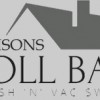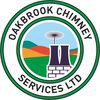
Why use Chim Chimney chimney sweeps? There is no requirement for anyone to have any formal training as a chimney sweep, many people start up as a chimney sweep with no experience and very little equipment. I have completed a 4 day training course with the guild of master sweeps, covering chimney sweeping, pots, cowls and build regulations.
There are different sized flues in chimneys, some are lined with flexible metal liners, clay liners, concrete liners or just a standard brick construction and all of these different types of flues need the correct sized brushes and correct rods to sweep them otherwise the flue might be damaged.
I have the correct equipment and have done a 5 year apprenticeship with a 3rd generation chimney sweep who has over 30 years experience himself, this knowledge has been passed on to me and you will in turn benefit by having your chimney cleaned properly, with the correct equipment and with the minimum of disruption.How is the work done?
There are different sized flues in chimneys, some are lined with flexible metal liners, clay liners, concrete liners or just a standard brick construction and all of these different types of flues need the correct sized brushes and correct rods to sweep them otherwise the flue might be damaged.
I have the correct equipment and have done a 5 year apprenticeship with a 3rd generation chimney sweep who has over 30 years experience himself, this knowledge has been passed on to me and you will in turn benefit by having your chimney cleaned properly, with the correct equipment and with the minimum of disruption.How is the work done?
Services
All sweeps include a visual inspection of the installation, free smoke test and insurance recognised Chimney sweeping certificate. Prices are estimates based on times given above, additional charges will apply for blockages, nests, chimneys that need additional time/work due to not being swept regularly or difficult installations that require additional time.
Carbon monoxide is a poisonous gas that has no smell or taste. Breathing it in can make you unwell, and it can kill. Some people think solid fuel doesn't produce Carbon monoxide, I assure you IT DOES. Solid fuel i.e Smokeless fuel and wood DO produce carbon monoxide. Carbon monoxide (CO) is sometimes referred to as the "silent killer".
If you are burning wood, please ensure it is well seasoned, any water in the timber has to boil away before the wood will burn, and this will reduce the net energy released as useful heat (as opposed to steam up the chimney). If you can get them to light at all, logs that aren't dry will result in a fire that smoulders and creates lots of tars and smoke.
Reviews (9)
John J. Ns
Sep 12, 2021
Report
Richard Smith
Apr 27, 2021
Report
Irene Spokes
Aug 22, 2020
Report
Laura Senior
Jan 31, 2020
Report
We acquired a Clearview Stove in a recent house move and wanted to ensure it was all safe before our first use. From making the appointment to finishing the job, Wayne was very professional, worked cleanly and efficiently, happily answered all of our questions and has a wealth of knowledge on how best to use and maintain our stove. Highly recommend and we'll definatley be using again in the future.
Ken Wrobel
Jul 17, 2019
Report
Joanne Sawyer
Sep 19, 2018
Report
Phil Panks
Sep 14, 2016
Report
Michael Lupton
Oct 06, 2015
Report
Jenny Warcup
Jul 24, 2013
Report


